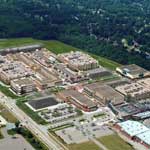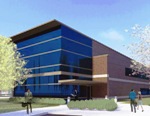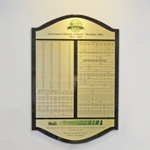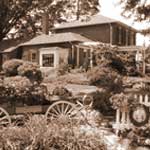- About Our City
- News & Events
- City Government
- City Departments
- Forms & Permits
- For Residents
- Resident Guide
- Schools
- City Services
- For Business
- eServices
City of Westlake
27700 Hilliard Blvd.
Westlake, OH 44145
440-871-3300
M – F: 8 a.m. – 5 p.m.
27700 Hilliard Blvd.
Westlake, OH 44145
440-871-3300
M – F: 8 a.m. – 5 p.m.
City History
The Early Years |
The 20th Century |
New Name, New Residents |
Growth Spurt |
The 21st Century |
The Bicentennial and Beyond |
Government Officials of Dover/Westlake, Ohio |
Westlake Historical Image Collection at Porter Library
| The Early Years Westlake’s beginnings date back to October 10, 1810, when two families arrived by oxcart to set up homesteads in Township 7, Range 15, of the recently platted Connecticut Western Reserve. Joseph and Lydia Cahoon, Asahel and Rebecca Porter and their children and Rebecca's brother, Leverett Johnson, settled in the portion of the township that later became Bay Village. By 1811, Leverett began clearing land in what later became Westlake. He is considered Westlake's first pioneer. Others who settled in the Westlake portion of Dover in 1811 include Joseph Root, brothers Abner and Jonathon Smith and their wives (both named Rebecca), brothers
James and Barnabas Hall, and Barnabas' wife Hannah and Noah and Betsey Crocker. All the married couples had children who accompanied them. These individuals and families led the way for many New Englanders who followed them. On
November 14, 1811, Dover Township was incorporated and Westlake considers that the date of the city's founding. Other early families included Cooley, Clemens and Sperry. Many of today's streets are named for these and other early settlers.
Agriculture in Dover Township evolved into the raising of grain, small fruit and grapes. The Nickel Plate Railroad laid the first track and operated the first locomotive, which arrived in Dover in 1882. Toward the latter part of the 19th century, the township was the second largest shipping point for grapes in the United States. |
|
The 20th Century |
By 1900, Dover Township had a permanent population of 2,233 and an annual influx of people who owned cottages on Lake Erie. These summer residents decided they wanted their own community, and, in a bitter fight, they broke away from Dover Township to form the community of Bay Village, taking the railroad with them. In 1908, residents of the southern part of Dover Township also seceded and became part of North Olmsted. Because township residents were concerned that a township form of government was inherently unstable, the remaining 15.9 square mile area was incorporated as Dover Village in 1911. For the next three decades, Dover Village grew, with truck and fruit farming as the backbone of the rural village. During this time, the Clague family donated their home and land to the village for civic use and recreation, and Hilliard Boulevard was cut through farmland. Both projects were aided by laborers from the Works Progress Administration (WPA), a program launched during the Great Depression that provided work for the unemployed. |
|
|
 New Name, New Residents In 1940, Dover was renamed the Village of Westlake to avoid confusion with another community in Ohio named Dover. As suburbs grew after World War II, Westlake became part of this population shift. By 1950, the population of the village stood at 4,912 – twice what it had been at the turn of the century. Ten years later, in 1960, it had jumped to 12,906, a 162 percent increase over 1950. This phenomenal growth rate led to an interest in planning to shape the future of Westlake, which became a city in 1957. During the early 1960s, city officials enacted the city’s first guide plan and municipal zoning ordinances. These plans separated industry to the northern parts of the city and set aside specific areas along principal streets for commercial activity and multifamily development. |
|
|
 Growth Spurt During the 1960s and 70s, the city saw the first contemporary winding subdivisions introduced, as well as the building of King James, its first office park. Interstate 90 was completed in 1976, linking the city with downtown Cleveland. By 1980, the population was 19,483. Soon after, Crocker Road was extended to Center Ridge Road, and Ranney Parkway was developed as an industrial and office park area. After five years of planning and two years of construction, St. John West Shore Hospital opened in 1981. It was later added onto and is now affiliated with University Hospitals and known as St. John Medical Center. By 1987 more than 10,000 people worked in Westlake and by 1990, 27,018 residents called the city home, some occupying new executive homes or new luxury apartments or condominiums, and others moving into well-maintained, existing housing stock. The period also included the opening of a new public library and a new post office. The early 1990s saw the construction of several new city facilities including a police station and two new fire stations, as well as the acquisition of a city golf course, now called Meadowood, and the opening of a new city-owned westside nature park off Bradley Road. The Promenade of Westlake shopping center brought a new array of shopping options to the west side of the city. In 1998, the city built an 80,000 square foot recreation center in the midst of an 86-acre park and in 2006 added 19,000 square feet to it. |
|
|
 The 21st Century By 2000, the population of Westlake had reached 31,719 and it passed the 33,000 mark just five years later, with a comparable daytime population consisting of students, workers and retirees. In 2003, Porter Public Library expanded to 75,000 square feet, and a new city hall opened. That same year, Cleveland State University located its first ever satellite campus in Westlake and Cuyahoga Community College debuted its first Corporate College. The city's newly remodeled and enlarged center for seniors reopened in January 2004 with a new name: Westlake Center for Community Services. The largest development in the city's history, Crocker Park is a cutting-edge, mixed-use town center with retail, office and residential space. A part of Phase 1 opened in November 2004 adjacent to the Promenade, near the intersection of I-90, Crocker and Detroit Roads. When completed, it will consist of 1.7 million square feet of development including the already built Main Street with first floor shops and apartments and offices above. The civic core of the development is a median park with fountains, chess boards and areas for community events. By 2008, seventy percent of the original project was constructed or had final approval and the majority of the mixed use buildings containing retail, office and apartments had been constructed and occupied. In November 2007, voters approved an expansion of Crocker Park with another nearly 400,000 square feet of development planned for the land east of the Promenade Shopping Center. Ultimately, the project will contain 2.1 million square feet of development. For-sale housing continues to be constructed and sold inside the western perimeter of Crocker Park. A civic plaza and multi-purpose structure are planned as an additional venue for community events. Other major facilities developed in the last decade include: Hyland Software, which has renovated two existing corporate buildings and built a number of expansions to keep up with their explosive growth, Five Seasons Country Club, LACENTRE conference facility,
Dave & Buster's, University Hospital Health System, Cleveland Clinic Lakewood Medical Center Phase Two, Premier Physicians Medical Office Building, Lutheran Home's Concord Reserve continuum of care campus, Westlake Service Center, Security Self Storage, Q-Lab, Crocker Corporate Center Office Building, and Paramount Tennis Club. |
|
|
 The Bicentennial and Beyond The year 2011 was a special one as it marked the bicentennial of Westlake's founding as Dover Township and the centennial of Dover's incorporation as a village.
Government Officials of Dover - Westlake, Ohio 1811 - 2011  While great care was taken to record accurate information, some discrepancies, spelling variations and unintentional omissions are inevitable due to the fact that, unfortunately, some records no longer exist or were not located during this project. Additionally, when original records differed from previously published information, the originals took precedence, and adjustments are reflected herein. It also must be noted that there were many other individuals who served in capacities not listed who are no less worthy of remembrance for their services throughout the last 200 years.  Researching this project was intriguing, captivating and extremely gratifying for Ms. Rosenbaum. She considered it a privilege to have had the opportunity to compile this information both to commemorate current government officials and their predecessors and to document an essential heritage of the history of Dover ~ Westlake, Ohio. Michael F. Killeen Westlake City Council President November 3, 2011 All are encouraged to visit Westlake City Hall during normal business hours to view the plaque. A copy of the booklet is available upon request, while supplies last. |
|
Westlake Historical Image Collection at Porter Library |
The Westlake Porter Library website houses an extensive Westlake Historical Image Collection. To access, click here. |


